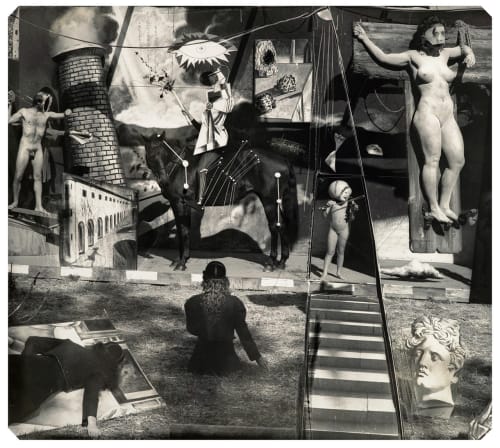Joel-Peter Witkin’s next exhibition is at the Louvre in Paris next year.
It will no doubt be a mesmerizing show, but Tucsonans don’t have to fly across the Atlantic to see his lauded photography.
Right now, the renowned photographer is exhibiting work in Tucson, at Etherton Gallery’s new digs in Barrio Viejo.
Joel-Peter Witkin: Journeys of the Soul is a career survey of more than 50 works, including his rarely seen drawings. His elaborate staged photos honor all humankind—the living and the dead, the saints and the sinners, the sick and the well, and nude beauties of every imaginable gender identity.
But hurry. The show will close at the end of the day next Saturday, Nov. 27.
The show is timely for both the artist and the gallerist, Terry Etherton. The gallery is celebrating its 40th anniversary, its recent move from downtown to the barrio and its long relationship with Witkin.
The photographer, now 82 years old, has had an enormous reputation for years, including overseas. (“The French are crazy about him,” Etherton says.) Etherton has been following Witkin for decades, and exhibited his work in the 1980s, when the artist first began to make his name. And there have been many Witkin shows at Etherton ever since.
“Inaugurating our new space with an exhibition of Witkin’s work is a fitting tribute both to the gallery’s and Joel’s legacy, and our longstanding friendship,” Etherton says. These days, Etherton Galley is Witkin’s sole representative in the United States. His other rep is in Paris.
Throughout his career, Witkin has taken weeks or even months to make a single work. First, he would made drawings to plot out the piece. (His small black-and-white sketches hanging in the show are charming.) Then, with his camera, he created his intricate still-life tableaux, as complicated as a movie set, with big casts of nudes or animals or skeletons.
Once he was satisfied with a photo, he would batter his master negative, scratching it, tearing, throwing wet tissue at it, collaging, toning by hand, coloring with paint or encaustic wax. As a result, no two prints are alike.
The finished images are extraordinary. Often inspired by religion and art history, Witkin’s pieces show compassion for the suffering and empathy towards non-conformers. Among the pieces, all of them gelatin silver print, we see a man hobbling on painfully bent legs; in another, the head of a dead man is in a tray. A man with a missing an arm holds a skull, a memento mori reminding us that that we will die someday.
Witkin makes exquisite portraits of women, not unusual. More unusually, but he also seeks out people of non-conforming identity.
In one of his early works, from 1988, “The Graces” pictures three beautiful nudes. Standing in a row, they mimic the lovely Three Graces of Greek myth. Unlike the Grecian goddesses, all three of these beauties have penises. Two also have breasts and one does not. Witkin simply honors who they are. In many ways, he has been ahead of his time.
...
(Continue this article on the Tucson Weekly website linked below)

